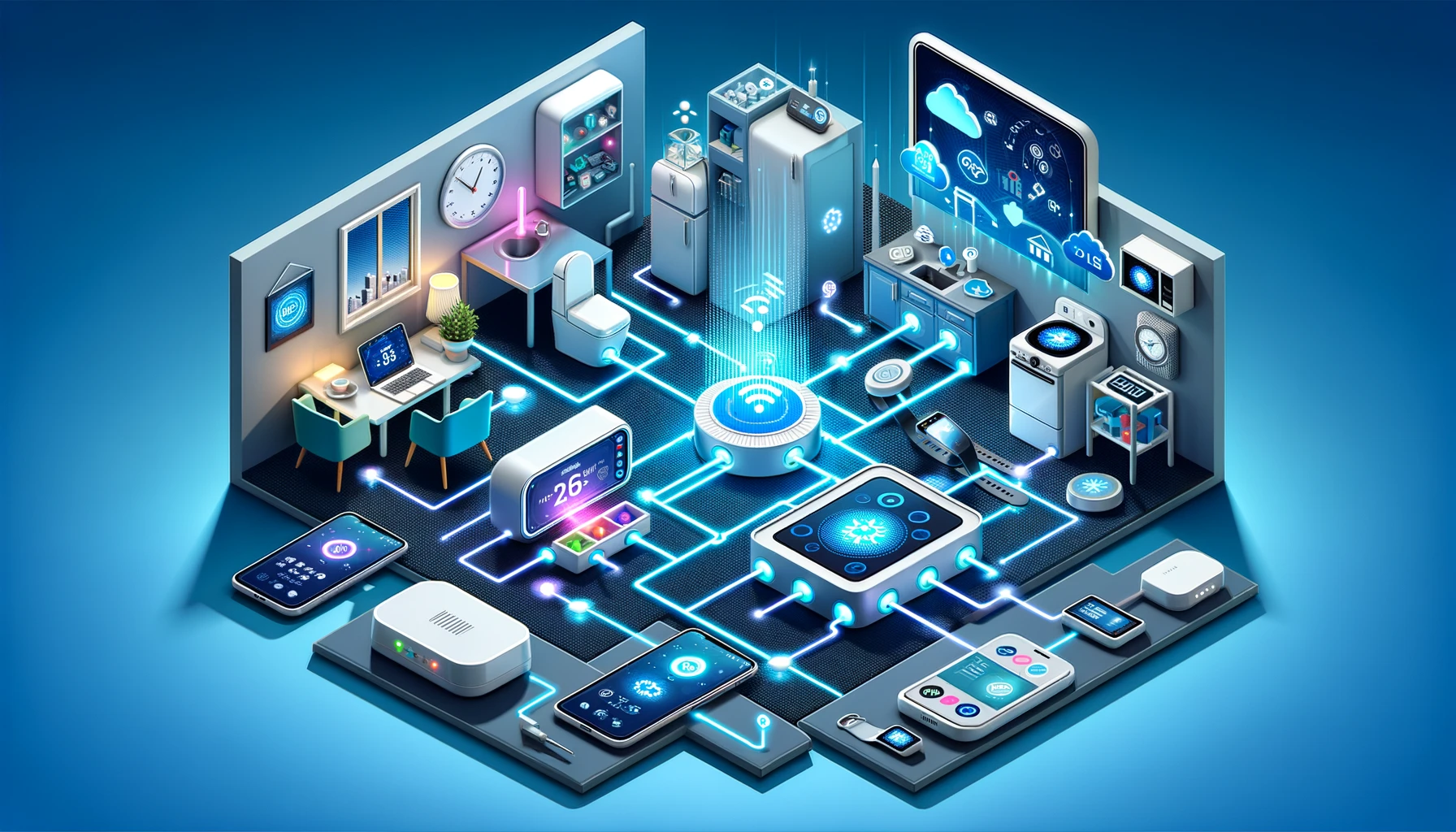
The Internet of Things (IoT) is a network of physical objects embedded with sensors, software, and other technologies that connect and exchange data with other devices and systems over the Internet. This enables autonomous operation, real-time monitoring, and data collection to improve efficiency and enable new services.
IoT represents a transformative phase in the digital revolution, marking the convergence of the physical and digital worlds. It encompasses a vast network of connected devices, from everyday household items to sophisticated industrial tools, all communicating and exchanging data.
How does IoT connect the physical with the digital?
The core principle of the IoT lies in connecting physical objects to the internet through embedded sensors, software, and other technologies. These “things” – ranging from wearables and smart appliances to industrial machinery and even agricultural sensors – can then collect, transmit, and analyze data, fostering real-time communication and automated actions. Here is how exactly everything happens:
Physical to digital
Sensors and actuators. Physical devices are equipped with sensors that gather data about their environment (temperature, pressure, motion, etc.). Actuators, which can be controlled digitally to perform actions in the physical world (turning on lights, adjusting thermostats, opening valves), are also used.
Data acquisition and conversion. Sensor data is collected and converted into digital signals that can be understood by computers. This may involve analog-to-digital converters (ADCs) for continuous data or digital signal processing (DSP) techniques for complex signals.
Communication protocols. Devices communicate with each other and gateways using standardized protocols like Wi-Fi, Bluetooth, Zigbee, or cellular networks. These protocols define how data is formatted, transmitted, and received.
Digital to physical
Data processing and analysis. The collected data is sent to cloud platforms or local processing units. Here, the data is analyzed, filtered, and aggregated to extract meaningful insights.
Decision-making and control. Based on the analyzed data, automated decisions can be made. This could involve sending commands to actuators to control physical devices or triggering pre-programmed actions.
User interfaces and feedback. Users can interact with the IoT system through mobile apps, dashboards, or voice assistants. This allows for monitoring system performance, issuing commands, and receiving feedback from connected devices.
Key technical components
Embedded systems. Small, low-power computers are embedded within devices, allowing them to collect data, communicate, and perform basic processing tasks.
Connectivity infrastructure. Networks like Wi-Fi, cellular, or specialized low-power wide-area networks are crucial for data transmission between devices and gateways.
Cloud platforms. Cloud computing offers centralized data storage, processing power, and analytics capabilities to manage large-scale IoT deployments.
Security measures. Robust security protocols are essential to protect data privacy, ensure device authentication, and prevent unauthorized access to the network.
Applications of IoT
The applications of the IoT are far-reaching and constantly evolving, impacting various aspects of our lives. Here are 10 prominent examples:
- Smart homes. Thermostats that adjust the temperature based on your habits (Nest by Google).
- Wearable fitness trackers. Monitor activity, heart rate, and sleep patterns (Fitbit).
- Smart appliances. Refrigerators that reorder groceries when supplies run low (Samsung Family Hub).
- Connected cars. Provide real-time traffic updates and remote diagnostics (OnStar by General Motors).
- Industrial asset tracking. Sensors monitor the location and condition of equipment in factories (Honeywell).
- Precision agriculture. Sensors optimize irrigation and fertilizer using real-time soil data (John Deere).
- Smart cities. Traffic lights adjust based on congestion, and waste bins indicate fullness (Siemens).
- Remote patient monitoring. Track vitals and health data for elderly or chronically ill patients (Philips).
- Retail inventory management. Monitor stock levels and automate reordering for optimal inventory control (Amazon Go stores).
- Connected security systems. Cameras and sensors provide real-time security monitoring and alerts (Ajax).
How do we safeguard the connected world?
While the potential benefits of the IoT are undeniable, security concerns remain a pressing issue. As more devices become interconnected, the potential attack surface expands, making them vulnerable to hacking and data breaches. What security challenges associated with the IoT do we face today?
- Device vulnerability. Many IoT devices have weak security protections, making them easy targets for hacking and malware attacks.
- Data privacy. The vast amount of data collected by IoT devices can include sensitive personal information, raising significant privacy concerns if not properly protected.
- Network security. IoT devices can serve as entry points to wider networks, potentially allowing attackers to access critical systems and data.
- Software updates. Some IoT devices lack the capability for automatic updates, leaving known vulnerabilities unpatched.
- Lack of standardization. The IoT industry lacks uniform security standards, leading to inconsistent security practices and increased risk.
- DDoS attacks. IoT devices can be hijacked to form botnets, which are then used to launch DDoS attacks, overwhelming networks with traffic.
By implementing robust security measures, using strong encryption, and keeping devices updated, the risks associated with IoT can be mitigated. Among companies working on improving IoT security are:
The Internet of Things Security Foundation (IoTSF) – a global industry consortium focused on developing best practices and standards for IoT security.
The Open Web Application Security Project (OWASP) – provides resources and guidance on securing web applications, which can be relevant to some IoT devices, and
National Institute of Standards and Technology (NIST) – develops cybersecurity frameworks and recommendations that can be applied to IoT deployments.
The future of the connected world
The IoT is here to stay, shaping a future where the physical and digital worlds converge seamlessly. By embracing its potential, addressing security concerns, and fostering responsible development, we can ensure that the IoT serves humanity and paves the way for a more sustainable and interconnected future.
As we move forward, we should remember that the true power of the IoT lies not just in connecting things, but also in connecting people and fostering collaboration to build a brighter future for all.

